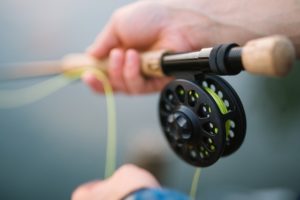Inland water hazards are often overlooked
Fishing at sea is one of most dangerous occupations in the world. Data from countries that collect accurate accounts show that occupational fatalities in their fishing industries far exceed their national average. The International Labour Organization (ILO) estimates that 24,000 fatalities occur worldwide per year in capture fisheries.
 While the marine working environment is well recognised for its inherent dangers, inland water hazards are sometimes overlooked. Taking 2012 UK figures for example, the number of people accidentally drowned was 371. Of these, 203 occurred in rivers and lakes, compared to 124 at the coast, harbours, docks, marinas and ports. Fifty five per cent of all drownings are within three metres of safe refuge.
While the marine working environment is well recognised for its inherent dangers, inland water hazards are sometimes overlooked. Taking 2012 UK figures for example, the number of people accidentally drowned was 371. Of these, 203 occurred in rivers and lakes, compared to 124 at the coast, harbours, docks, marinas and ports. Fifty five per cent of all drownings are within three metres of safe refuge.
There are key factors that affect our chances of survival should we fall into a body of water, be it a fast flowing river or a deep reservoir. Selection of suitable personal protective equipment, water temperature, our ability to swim and our understanding of defensive swimming as well as our level of fitness are critical.
Personal flotation devices vary greatly in design and activation mechanism. Selecting the right equipment is paramount for those working on or adjacent to water. Some buoyancy aids are suitable for good swimmers and for use near to a bank or shore where help is close at hand, while others are designed for general offshore and rough weather use.
Water temperature is something that is often overlooked. In water temperatures of 22°C the body can generate enough heat to keep the body warm. The problem with exercise is that the body needs rest and food to keep going.
At 21°C, water begins to have effects on the body that accelerate the risk. Cold water shock occurs in any water temperature less than 21° C. Cold shock poses immediate danger that may lead to death. It usually lasts from between 1-3 minutes. The colder the water, the greater the cold shock response.
Cold shock causes early swim failure as it reduces the ability to make co-ordinated limb movements. In cold water, even strong swimmers may not be able to co-ordinate their breathing and the muscular action of swimming. Studies have found that strong swimmers are exhausted after swimming for 12 minutes in 10°C.
Overall, the average sea temperature in the British Isles ranges from 6-10°C in the winter to 15-20°C in the summer, while inland water temperatures may be cooler. Hypothermia sets in when the core body temperature drops from 37°C to 35°C or lower. Body heat loss is 25 times faster in cold water than in air.
Swimming is a valuable skill and when complimented with an understanding and experience in defensive swimming it can prove invaluable. When working along fast flowing waters or in flood conditions identification of recirculating hydraulics (e.g. weirs), current vector, laminar and turbulent flow and the location of eddys are all critical for dynamic risk assessment and in self rescue and group rescue situations.
If you are working on or adjacent to inland waters, give it the respect it deserves. Conduct a thorough risk assessment; select the correct personal protective equipment for the environment, take account of seasonal variations and take time to identify the unique inland water hazards such as locks, weirs, waterfalls and strainers.
Michael Cusack is secretary of the IOSH Ireland Rural Industries Section
Inland water hazards are often overlooked
Fishing at sea is one of most dangerous occupations in the world. Data from countries that collect accurate accounts show
Safety & Health Practitioner
SHP - Health and Safety News, Legislation, PPE, CPD and Resources Related Topics
Workers facing uncertain future coupled with health and safety risks, new IOSH report says
Legionella Management: Who can be appointed as RP, DRP, AP or CP?
James Macpherson on risk: ‘More of the same won’t work’

 While the marine working environment is well recognised for its inherent dangers, inland water hazards are sometimes overlooked. Taking 2012 UK figures for example, the number of people accidentally drowned was 371. Of these, 203 occurred in rivers and lakes, compared to 124 at the coast, harbours, docks, marinas and ports. Fifty five per cent of all drownings are within three metres of safe refuge.
While the marine working environment is well recognised for its inherent dangers, inland water hazards are sometimes overlooked. Taking 2012 UK figures for example, the number of people accidentally drowned was 371. Of these, 203 occurred in rivers and lakes, compared to 124 at the coast, harbours, docks, marinas and ports. Fifty five per cent of all drownings are within three metres of safe refuge.